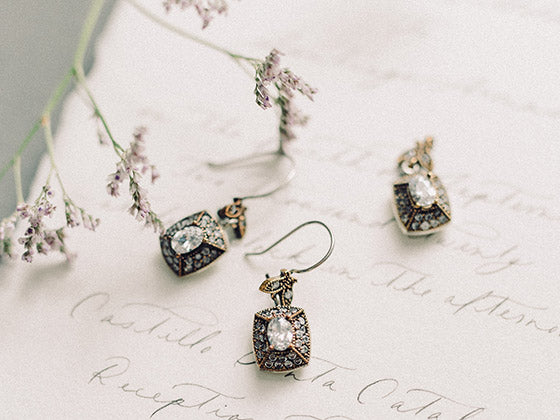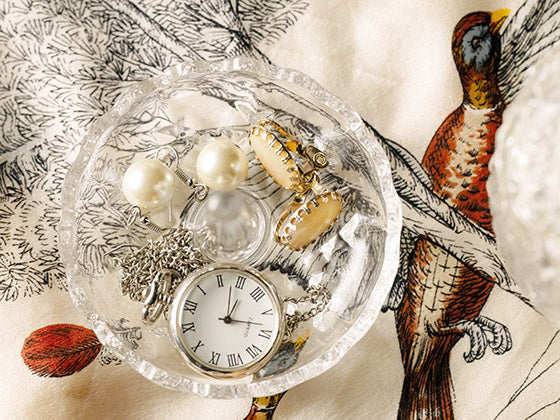THE ROMANTIC PERIOD . THE GRAND PERIOD . THE AESTHETIC PERIOD
The Grand Period 1861 - 1885
Remembrance and Reflectance Of Mourning and Souvenir Jewellery
The Romantic period concluded with the death of Prince Albert in 1861 and the American Civil War. Consequently, the demand for remembrance of someone or somewhere, heightened at the turn of the mid 19th Century. This reflected the heaviness and grandiose style of mourning and souvenir jewellery. Lockets composed of engravings with a loved one’s name, along with their date of death, rose to prominence. Mementos were treasured at the back of mourning brooches, within a glass compartment, often a lock of hair from a loved one.

Tourists travelling to Italy, specifically Venice, Florence and Rome, purchased grand tour brooches. These were crafted using the Italian method ‘Pietra dura’, meaning hard stone, a mosaic composed of gemstones, that would be pieced together to depict: Italian architecture, landscapes, animals, birds or flowers. Carved cameo designs, drew parallels with the Gothic and Renaissance periods. Grande jewellery included notable motifs for example: animal claws, crescents, daisies, shields, shells, stars and sunflowers. These jewels were usually enriched with the following desired gemstones: Jet, Onyx, Diamond, Garnet, Amethyst and Paste.
"The Prince Albert Effect", Enriched The Jewellery Attire of the Gentlemen
The ‘Albert’ chain was famously worn and named after by Prince Albert; it was made out of yellow gold and consisted of a T-shaped bar at one end, which fitted into a waistcoat’s button hole and a swivel clasp at the other end, to attach to a pocket watch. Moreover, the Albert chain would be accessorised with charms, otherwise known as ‘watch fobs’. These decorative ornaments have a hard stone base, which were principally made out of a variety of Quartz: Agate, Amethyst, Bloodstone, Citrine, Chalcedony, Cornelian, Onyx, Smokey Quartz & Tiger’s Eye. Sometimes, the hard stone was carved into an intaglio, producing a seal when stamped into wax.

On the other hand, another feature of watch fobs involved movement, whereby the hard stone would spin to display an alternative gemstone. Above the hard stone, lies an ornate gold motif that would link to a bale, to be fixed onto the Albert chain. Even after Prince Albert’s passing, this item of jewellery rapidly became accustom, to a man’s attire in the mid 19th century.
The Oil Painting of Jewellery, The Intaglio
Likewise, the reverse crystal intaglio brooch was another popular jewel for gentlemen, the intaglio was constructed with oil paints which illustrated animals including: dogs, horses & birds. Similarly, ladies would wear reverse crystal intaglio brooches with oil paintings that would render: flowers, butterflies, bees, insects, birds & monograms. The intaglio would be carved into the back of a rock crystal cabochon. As a result, the intaglio appears as a three dimensional image.

The Harmony of Silver Working With Diamonds
The discovery of silver from Nevada in 1860 and diamonds from South Africa in 1867, plunged these materials into mass production. A range of diamonds, of all sizes were extracted from the mines in South Africa and encouraged the new development of Pavé. The setting involved the use of small diamonds being placed closely together (girdle to girdle) with minimum amount of metal being seen.

The pairing of diamonds and silver was not unorthodox, as the white metal reflected more than 95% of white light (also known as visible light). White metal is the preferred choice, when setting diamonds as yellow metal, provides an undesirable yellow tinge to the colourless stone. Besides, white gold had not been explored yet and platinum was rarely utilised in jewellery, due to the complications that arose with its very high melting point (this was eventually overcame, in the latter part of the 19th century). Despite the fact that, silver complemented diamonds more than yellow gold; the use of gold was still notable in a jewel, as silver was known to tarnish, when it comes into contact with the wearer’s skin. Hence, silver was usually backed with gold.
Pique, The Decorative Art of Jewellery

Pique was another skill that simultaneously favoured the use of silver and gold, in which it was inlaid into another material, to create a wonderful decorative pattern. The majority of the time, this decorative design was inspired by floral motifs.

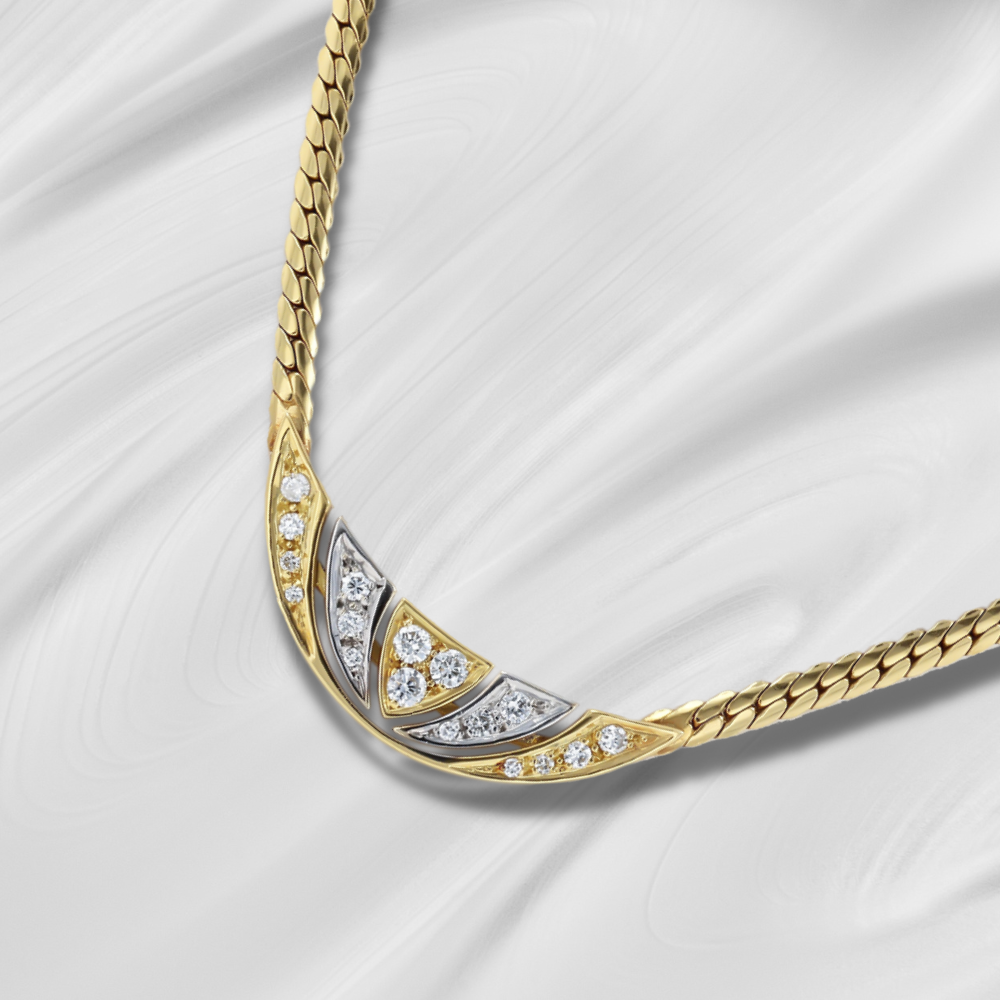

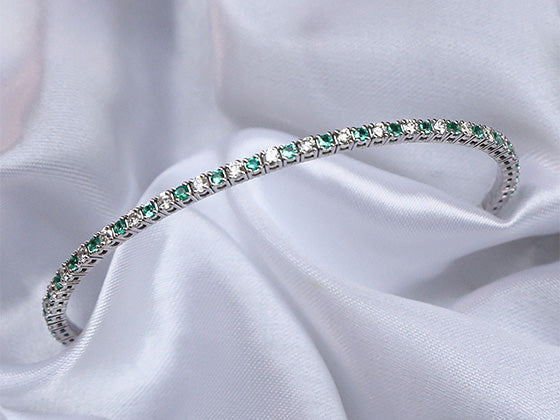

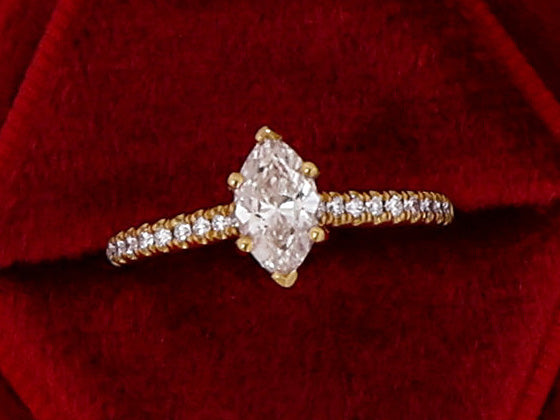
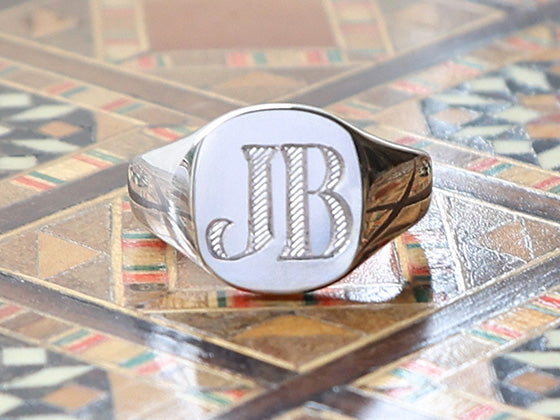
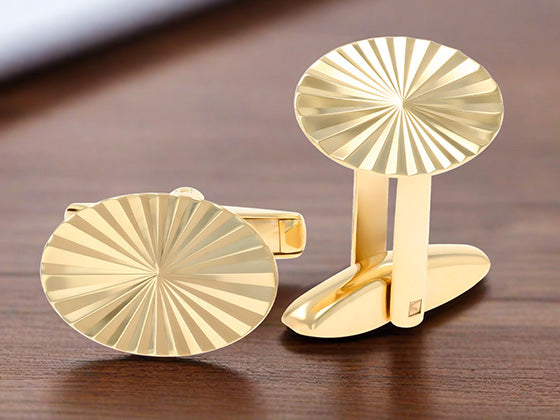
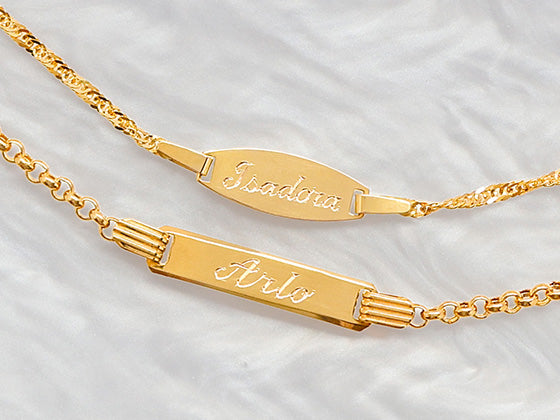
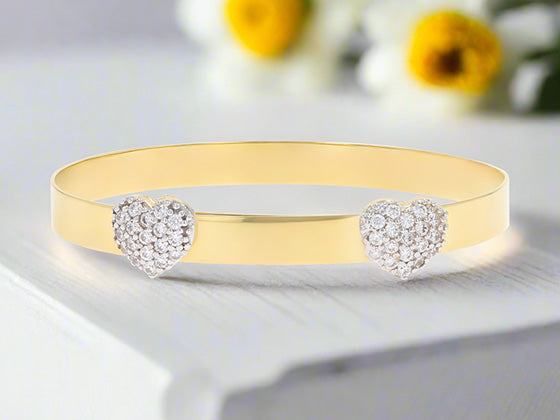
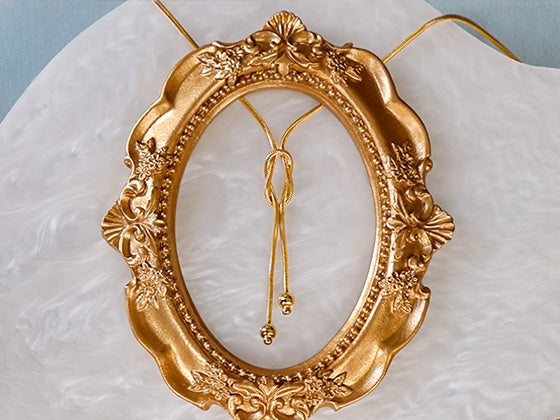
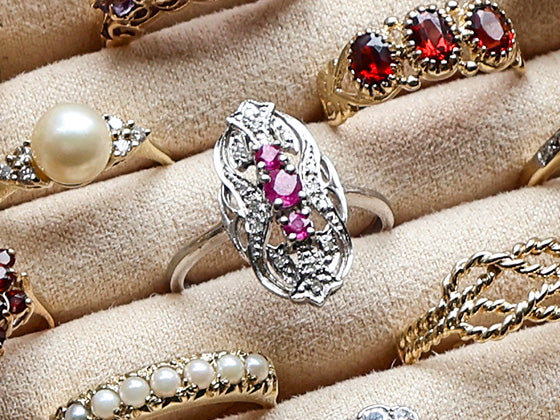
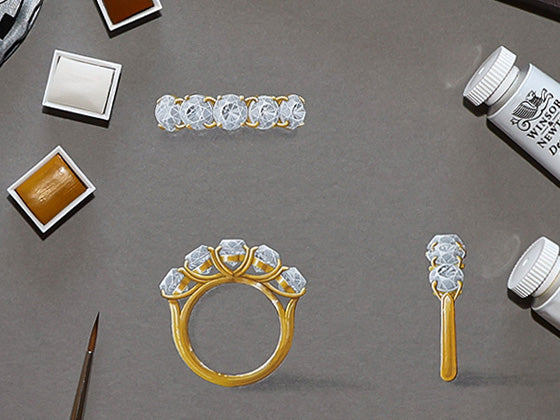
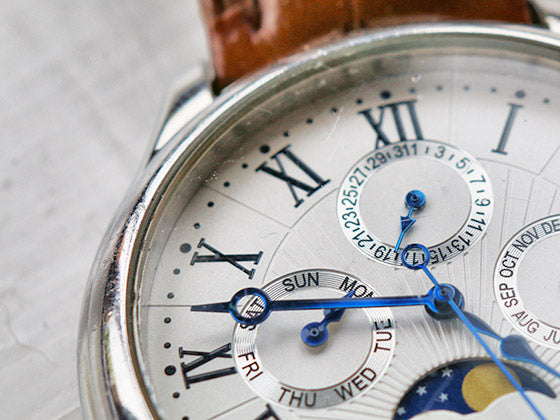
 Contact Us
Contact Us